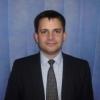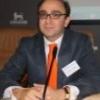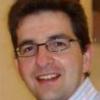Mr Inderpaul Birdi, Consultant Cardiac Surgeon, Specialist in Keyhole Surgery The Harley Street Clinic explains how the latest high quality surgical approaches makes a big difference to the quality of his patient's lives.
The collection of certain types of cells from an individual’s body, and coaxing of those cells to differentiate into heart cells, which can then be sprayed onto a framework within a 3-D printer to create a whole, functioning heart is close to reality.
Total Health asks the UK's top Heart Specialists the following questions:
- Q1: What was it that made you want to specialise in the heart?
- Q2: What is your own area of special interest and why this?
- Q3: The treatment of heart conditions very often requires the integration of skills between the cardiologist and cardiac surgeon. This can be quite confusing for patients so how would you describe/explain this interplay?
- Q4: What in your opinion has been the most important innovation in the treatment of heart conditions?
- Q5: What in your opinion is the single factor that would most improve outcomes for heart conditions?
- Q6: What does the future hold for treating heart conditions?
Q1: What was it that made you want to specialise in the heart?
I have always been interested in the way the human body works and becoming a heart surgeon was not a difficult choice of specialty for me. I enjoy both the highly technical aspects of the surgery required to correct problems, and the in depth understanding of intensive medicine required to look after the patients afterwards. Cardiac surgery is a specialty that really makes a dramatic difference to both the quality and length of patients’ lives.
Q2: What is your own area of special interest and why this?
I have performed adult cardiac surgery as a Consultant for more than 10 years. Whilst traditional procedures requiring breastbone division produced excellent results, my travel around the world exposed me to newer techniques. These allowed surgeons to perform the same operation through smaller “keyhole incisions” between the ribs, without the need to divide any bones. As we all know, bones take many weeks to heal, and avoidance of this can potentially speed up the recovery of patients following heart surgery.
I have performed these “keyhole” procedures for the correction of coronary artery disease, as well as for the repair or replacement of heart valves. My experiences have led me to the clear conclusion that in the hands of the right “teams”, patients can recover significantly more quickly, and with less scarring than with traditional breast bone division.
Q3: The treatment of heart conditions very often requires the integration of skills between the cardiologist and cardiac surgeon. This can be quite confusing for patients so how would you describe/explain this interplay?
The interplay between cardiology and cardiac surgery is becoming ever more important. Diagnostic cardiology is essential in the evaluation of heart disease preoperatively. For example, we now realise that repairing heart valves is far superior to valve replacement for a variety of reasons. The expertise of cardiologists in the area of cardiac echocardiography (ultrasound heart scan) is essential to allow surgeons to predict the likelihood of valve repair versus replacement.
Cardiologists and cardiac surgeons meet regularly in multidisciplinary meetings to discuss the best treatment options for patients with heart disease, and now even work together in the operating theatre to deliver new therapies like percutaneous heart valve replacements, hybrid coronary artery interventions (surgery and stents), and heart rhythm treatments for example.
This interplay will continue to develop further, and new trainees in the specialty are now being exposed to both disciplines in order to equip them for the future.
Q4: What in your opinion has been the most important innovation in the treatment of heart conditions?
In the area of interventional heart disease, I believe that the development of highly complex “guide wire” technology has allowed both the cardiologist and surgeon to deliver very complex procedures on the heart. In order to treat narrowed heart arteries, for example, the cardiologist has to pass a guide wire into the coronary artery. This wire has certain properties that allow the cardiologist to manipulate its direction into a 1mm vessel very accurately. Once in position, a stent can be passed with precision into the artery to open it up and restore blood flow to the heart.
Guide wires are also essential to the cardiac surgeon in order to place pipes into blood vessels when performing keyhole procedures that require the use of the heart lung machine. The heart lung machine, of course, is probably the most important innovation in heart surgery. This machine is used to create an artificial circulation for patients in whom the heart needs to be stopped whilst performing the surgery. Designed in the 1950’s, the technique has evolved into a highly sophisticated process with little risk even in the most fragile patients.
Q5: What in your opinion is the single factor that would most improve outcomes for heart conditions?
It seems very obvious, but earlier diagnosis and treatment of heart disease can dramatically improve outcomes for our patients. Increasingly, patients are pursuing non-invasive diagnostic tests like echocardiography, and MRI scanning in order to screen for heart disease. Whilst there are no clear guidelines for active screening of all patients for the presence of heart disease, it is clear that certain groups of patients, particularly those with strong family histories of heart disease, can benefit from earlier diagnosis and treatment.
Q6: What does the future hold for treating heart conditions?
The collection of certain types of cells from an individual’s body, and coaxing of those cells to differentiate into heart cells, which can then be sprayed onto a framework within a 3-D printer to create a whole, functioning heart is close to reality. This technology is one of the most exciting concepts, and has the potential to revolutionise cardiac interventions.







